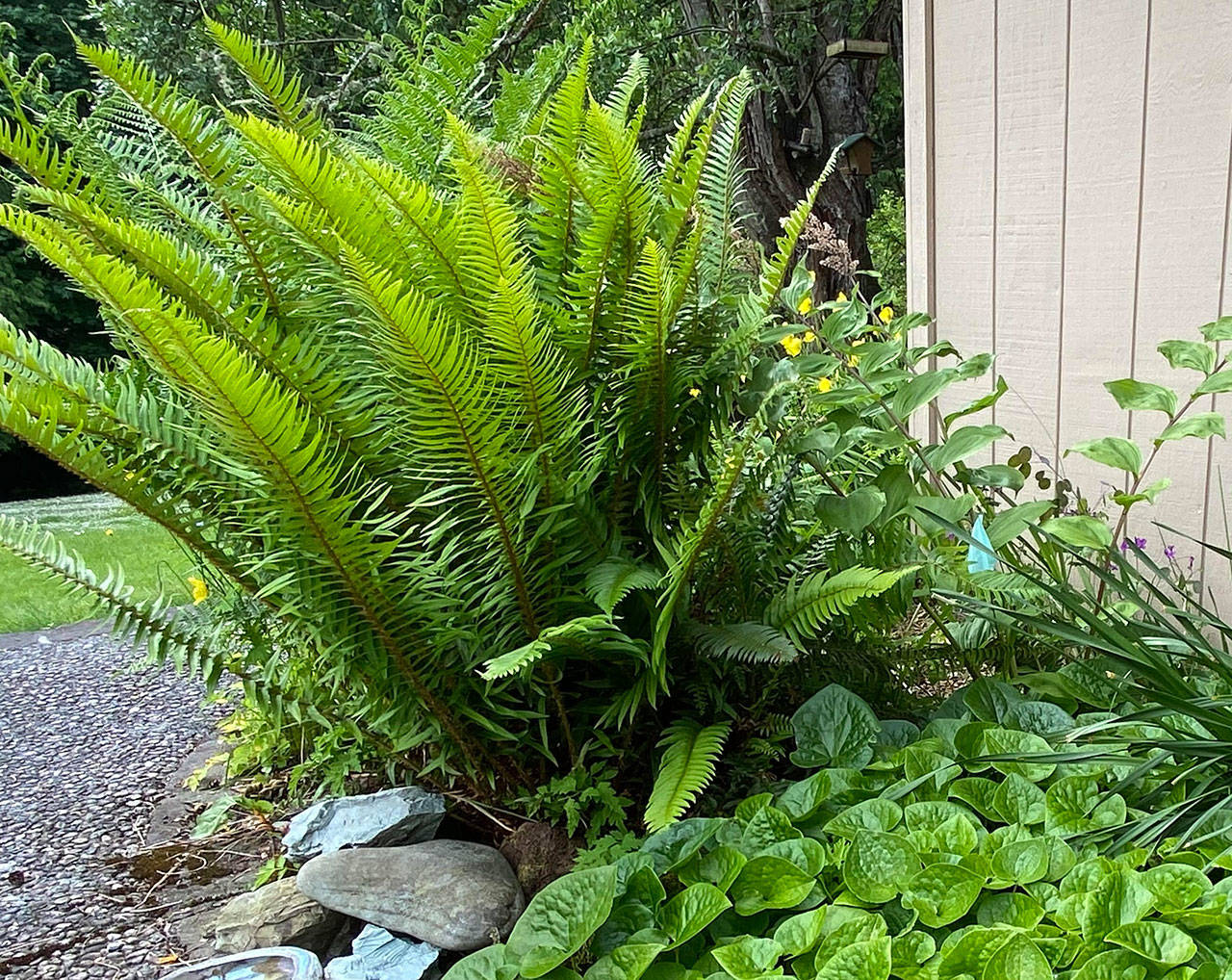Ferns offer a dazzling array of foliage textures, structure, and color to a garden. Having adapted over eons to changing climates, they are among of the most successful plant species to have ever inhabited the earth.
Ferns can be found from coastal rain forests to alpine xeriscapes, from wetlands to serpentine soils.
So, how can there not be one perfect for your home garden?
It is good to recognize that ferns are not all the same. The fern you bought to grow as a houseplant may be better adapted to your garden. Misting it every day may not be enough, if it is used to 80 or 90 percent humidity.
On the other hand, an alpine fern is used to a drier environment and lower humidity, so you may be drowning it by watering too often. Put your garden ferns outdoors in a suitable environment. By doing a little research first, you can be sure they will thrive where you place them. (See resources in sidebar.)
If you’re looking for ground covers, the alpine water fern (Blechnum penna-marina), an evergreen with coppery red fronds, forms a dense ground cover in sunlight given a moist but well-drained soil. The western oak fern (Gymnocarpium disjunctum) and the common oak fern (G. dryopteris), both native to the peninsula, are options for consistently moist, shady areas of the garden.
As if the gorgeous shades of green weren’t enough to recommend them, some ferns come dressed in colorful foliage. Consider the eye-catching autumn fern (Dryopteris erythrosora). Its new fronds emerge orange-bronze in the spring and fade to green in the summer. In the fall, they produce bright red sori (spore sacs) on the underside of the fronds.
Ferns in the genus Athyrium transplant to the garden easily and propagate readily, making them good choices for a background drift with colorful flowering perennials. The lady fern (A. filix-femina) is a widely available hardy native example. A cultivar, A. angustum, “Lady in Red,” has brilliant ruby red spines and lime-green leaflets.
Other showy members are variants and cultivars of the Japanese painted ferns (A. niponicum) including ‘Pictum’ with silvery pinnules on deep purple blades and ‘Silver Falls’ with gracefully arching silvery fronds.
Among ferns adapted to drier habitats, the maidenhair spleenwort (Asplenium trichomanes) and the alpine water fern mentioned above will thrive in rock gardens. The spleenwort is particularly tolerant of varying conditions.
In addition, the naturally occurring dwarf forms of the western maidenhair (Adiantum aleuticum), the ‘Imbricatum’ and ‘Subpumilum’ will grow with minimal fuss in bright light and relatively dry conditions as will the dwarf western sword fern (Polystichum imbricans), which loves the sun and a rocky substrate. These dwarf forms will grow slowly and grace a retaining wall for years with little care.
The ubiquitous native sword fern (Polystichum munitum) has the attributes of a good specimen plant, with layer after layer of fronds circling a compact crown. It is a workhorse among ferns.
Its structurally upright habit can reach as high as 5 feet and sport as many as 50 fronds. It takes full sun and is remarkably drought tolerant, yet thrives in moist, shady woodland settings.
Alone or in groupings, the sword fern adds a commanding structural element to any garden. If you only have one fern in your garden, make it this one.
Here are two unusual specimens for those fortunate to have a marsh on their property. The visually striking royal fern (Osmunda regalis) and its cousin the cinnamon fern (Osmundastrum cinnamomeum) can grow as tall as 8 and 5 feet, respectively.
They thrive in moist habitats in open light or shade. The royal fern produces distinctive reddish-brown spores on the tips of specialized fronds. The dramatic appearance of cinnamon red spore-bearing spikes from the center of the cinnamon fern adds to its color and structural interest.
Ferns have few predators and will reward you despite your neglect.
Whether you are a seasoned gardener or a beginner, they are a sure bet to enhance your garden with minimal care.
Sara Farinelli is a Clallam County Master Gardener volunteer.



